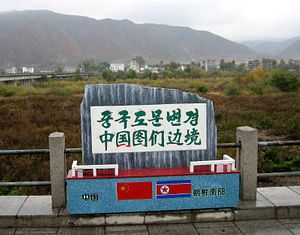Similar to the rest of the world, North Korea saw a significant decline in trade in the early months of the pandemic. But as China’s economy began to recover and global trade was restored to pre-pandemic levels, North Korea’s trade deteriorated further.
North Korea’s declining trade is surprising on one level. Among the world’s major economies, China recovered the quickest from the pandemic and in recent years has accounted for upwards of 90 percent of North Korea’s trade. China’s GDP expanded by 6.9 percent in the fourth quarter and finished the year up 2.3 percent. While imports for the full year were down 1.1 percent, China’s expanding economy in the second half helped support imports from around the world and by December imports were growing by 6.5 percent compared to the prior year.
North Korea, however, isn’t benefiting from its neighbor’s return to growth and that’s unlikely to change in 2021 due to the pandemic.
After seeing trade bottom out in March 2020, trade between China and North Korea began a steady recovery until peaking in June. In March, exports to China declined by 96 percent to just under $616,000. By June, they had recovered to $9.1 million. While still about $5 million below North Korea’s exports to China in June of the previous year, they had recovered to well above their March trough. A similar pattern is visible in North Korea’s imports from China, which rose from $17.3 million in March to $87.7 million in June.
A significant factor in North Korea’s divergence from trends elsewhere is how it has handled the pandemic. In the second half of the year, Kim Jong Un called on North Koreans to remain vigilant to COVID and Pyongyang began implementing stricter provisions to prevent the spread of COVID-19, including tighter restrictions on the border, in preparation for the 75th anniversary of the founding of the Korean Workers Party in October last year and the 8th Party Congress in January. Those efforts expanded even after the 8th Party Congress concluded.
As a result trade began to decline. By September North Korea’s exports to China largely consisted of exports of hydroelectric power. In the fourth quarter, other than shipments of some miscellaneous chemicals in October and December, exports had either stopped or declined to less than $2,000 in other export categories.
Imports from China had also largely disappeared by the fourth quarter, though imports of petroleum fell to zero even earlier. The only significant exception was $3.3 million in imports of sugar and confectionary products in December. The next largest import item in the fourth quarter was $33,000 in wood products in November.
By the beginning of 2021, outside of $3.2 million in exports of hydroelectric power to China in the first two months of the year trade had nearly ceased. North Korean exports of other goods amounted to less than $2,500, while imports from China only amounted to $7,479 as North Korea imported small amounts of hydroelectric power and plastics.
The decline in North Korean trade extends beyond China. Russia, another important trading partner for North Korea, also saw decline its trade with Pyongyang later in the year.
For all of 2020, North Korea’s imports from Russia remained fairly stable compared to the previous year. In 2019, North Korea imported $44.9 million in goods from Russia, while importing $42 million in 2020. The composition of goods imported changed, however.
North Korea turned to Russia for imports of essential products such as cereals and pharmaceuticals earlier in the pandemic. Imports of cereals jumped from $3.8 million to $15.4 million, while imports of pharmaceuticals grew from $2.5 million to $3.9 million. Imports of both, however, had stopped by December. In contrast, imports of petroleum products declined 65 percent. By December and January, Russian exports to North Korea had declined to zero for all products.
With the exceptions of July and September, North Korea’s exports to Russia were minimal for most of the year. In July, more than $150,000 in exports of musical instruments pushed total exports to Russia to $246,967, while $117,000 in exports of plastics helped support September exports of $157,000. By December, North Korea only exported $12,110 worth of goods to Russia and that declined to zero in January.
To combat sanctions North Korea has often turned to smuggling, but the restrictions inhibiting North Korea’s legal trade are also reported to extend to much of North Korea’s smuggling activities. The U.N. 1718 Committee’s most recent report suggests that smuggling of coal ended in July, but that efforts to smuggle in petroleum through September exceeded the petroleum caps under U.N. sanctions.
With the restrictions inhibiting North Korea’s ability to import food and key components for agriculture, such as agricultural plastics, food has become more scarce. The USDA has estimated that a million more North Koreans have become food insecure since the pandemic began. Kim Jong Un is reported to have described the broader economic environment as “the worst-ever situation” in the country.
There have been reports that North Korea is developing new decontamination facilities to help facilitate trade, but until it loosens border controls and begins a program to vaccinate a significant portion of the population it is unlikely that North Korea’s trade will return to pre-COVID levels in the near-term.
































